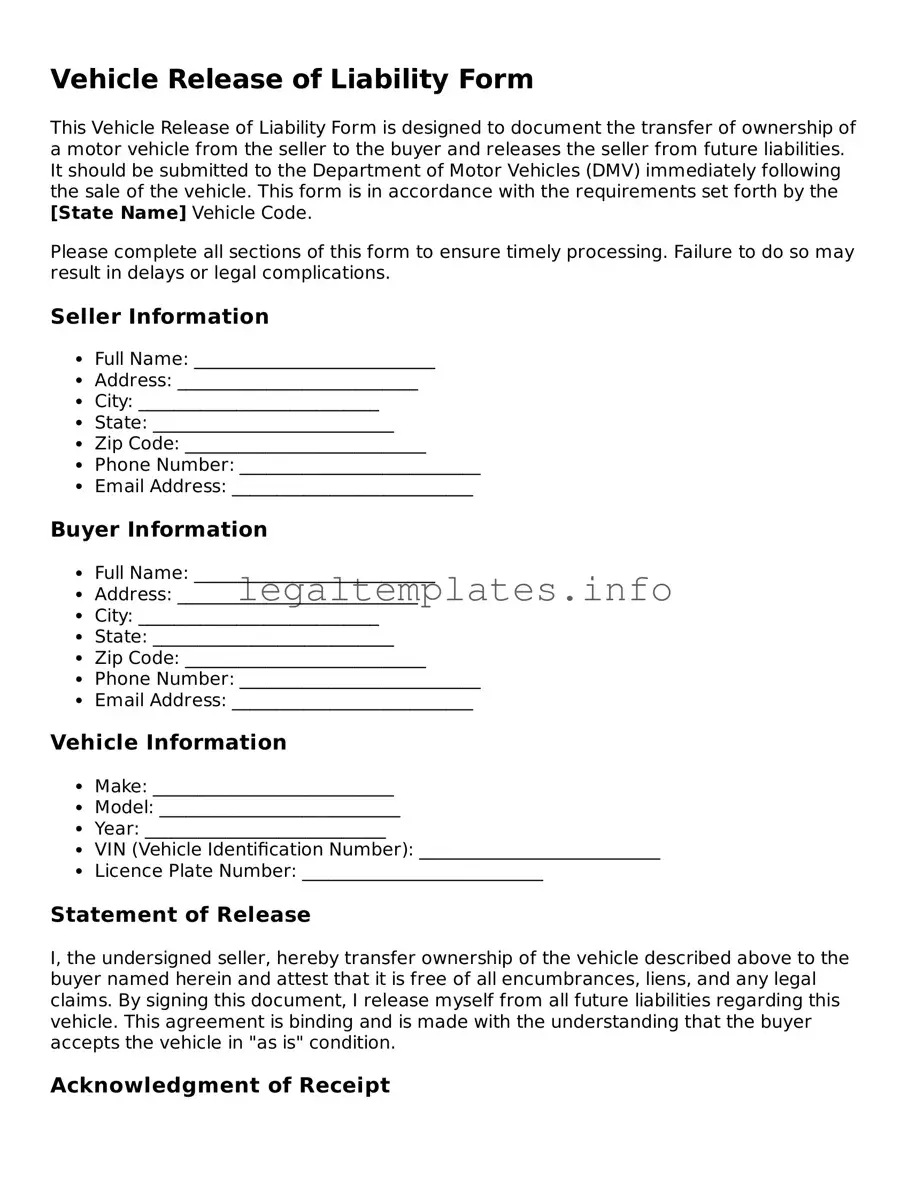Vehicle Release of Liability Form
This Vehicle Release of Liability Form is designed to document the transfer of ownership of a motor vehicle from the seller to the buyer and releases the seller from future liabilities. It should be submitted to the Department of Motor Vehicles (DMV) immediately following the sale of the vehicle. This form is in accordance with the requirements set forth by the [State Name] Vehicle Code.
Please complete all sections of this form to ensure timely processing. Failure to do so may result in delays or legal complications.
Seller Information
- Full Name: ___________________________
- Address: ___________________________
- City: ___________________________
- State: ___________________________
- Zip Code: ___________________________
- Phone Number: ___________________________
- Email Address: ___________________________
Buyer Information
- Full Name: ___________________________
- Address: ___________________________
- City: ___________________________
- State: ___________________________
- Zip Code: ___________________________
- Phone Number: ___________________________
- Email Address: ___________________________
Vehicle Information
- Make: ___________________________
- Model: ___________________________
- Year: ___________________________
- VIN (Vehicle Identification Number): ___________________________
- Licence Plate Number: ___________________________
Statement of Release
I, the undersigned seller, hereby transfer ownership of the vehicle described above to the buyer named herein and attest that it is free of all encumbrances, liens, and any legal claims. By signing this document, I release myself from all future liabilities regarding this vehicle. This agreement is binding and is made with the understanding that the buyer accepts the vehicle in "as is" condition.
Acknowledgment of Receipt
I, the undersigned buyer, acknowledge receipt of this Vehicle Release of Liability Form and understand that the vehicle is sold in "as is" condition without any guarantee or warranty. I accept full responsibility for the vehicle and any subsequent costs associated with its ownership from the date of sale.
Signatures
___________________________
Seller's Signature
Date: _______________________
___________________________
Buyer's Signature
Date: _______________________
Note: Both the seller and buyer should retain a copy of this form for their records. The seller is responsible for submitting this form to the [State Name] DMV within the timeframe required by state law.
